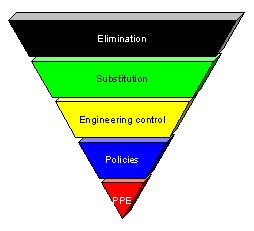Step 1 – Inspect the plant
When identifying hazards, you should think about all the activities that may be carried out during the life of the plant at your workplace, such as installation, commissioning, operation, inspection, maintenance, repair, transport, storage and dismantling. For each of these activities, you should consider whether:
- the plant could cause injury due to entanglement, falling, crushing, trapping, cutting, puncturing, shearing, abrasion or tearing
- the plant could create hazardous conditions due to harmful emissions, fluids or gas under pressure, electricity, noise, radiation, friction, vibration, fire, explosion, moisture, dust, ice, hot or cold parts, and
- the plant could cause injury due to poor ergonomic design—for example, if operator controls are difficult to reach or require high force to operate.
Step 2 – Assess the risks
To assess the risk associated with plant hazards you have identified, you should consider:
What is the potential impact of the hazard?
- How severe could an injury or illness be? For example, lacerations, amputation, serious or fatal crushing injury, burns
- What is the worst possible harm the plant hazard could cause?
- How many people are exposed to the risk?
How likely is the hazard to cause harm?
- Could it happen at any time or would it be a rare event?
- How frequently are workers exposed to the hazard?
Step 3 – Control the risks
The ways of controlling the risks associated with plant are ranked from the highest level of protection and reliability to the lowest. This ranking is known as the hierarchy of risk control. This may involve a single control measure or a combination of two or more different controls.
Step 4 – Review the risk control measures
You should consult your workers to obtain feedback on the plant and work processes being used and consider the following questions:
- Are the control measures, for example guards, working effectively in both their design and operation?
- Have all hazards associated with the plant been identified?
- Has the purchase of a new item of plant made the job safer?
- Are safety procedures being followed?
- Has an incident occurred in relation to the plant?
- If new legislation or new information becomes available, does it indicate current controls may no longer be the most effective?
This article was taken in part from Safe Work Australia ‘Managing Risks of Plant in the Workplace’ Draft Code of practice we hope you found it informative.
Posted by Cathal Uniacke – cathal@custodiansafety.com.au





